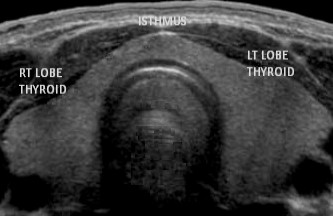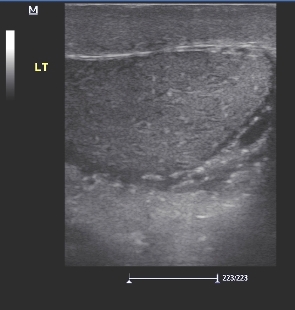Small-Parts Ultrasound
What is small parts ultrasound imaging?
Ultrasound imaging of small parts is a useful way of evaluating many of the superficial organs of the body such as the thyroid gland, the neck and the testes, lumps and swellings. The ultrasound images can help an ultrasound practitioner to evaluate these organs and look for signs of disease.
Thyroid ultrasound is used for diagnosing suspected thyroid disease. Most ultrasound examinations are performed to look at palpable or visible “lumps”, or enlargement of the gland found during a clinical examination. The ultrasound can establish if the nodule is inside the thyroid gland or outside it and whether it is a cyst or a soft tissue nodule. Cysts are almost always non cancerous (benign), although in some cases the fluid may be taken out by a needle under ultrasound guidance for additional testing.

Testicular, Scrotal ultrasound is an imaging technique used for the diagnosis of suspected abnormalities of the scrotum. It is the primary imaging method used to evaluate problems of the testicles and surrounding tissues. It is used when a patient has pain or feels a lump in the scrotum. Other indications for an ultrasound scan include an absent or undescended testicle, inflammation, testicular torsion (twisted testis), fluid collection, abnormal blood vessels or a mass (lump or tumour).
What preparation is required for the Small-Parts Ultrasound scan?
No specific preparation is required for the Ultrasound.
What will happen during the examination?
The ultrasound examination is non-invasive and painless. You will be asked to lie on your back on the examination couch and expose the area to be examined. Our highly qualified and experienced Sonographer will move a transducer lubricated with warm gel over the area to obtain the necessary images. You are welcome to ask questions during your examination. You may bring someone into the examination room with you if you wish (no children please), and a HealthCare Assistant will also be on hand should you require support or a chaperone.
Click here for more information on different types of Ultrasound Scans



